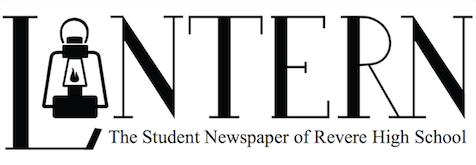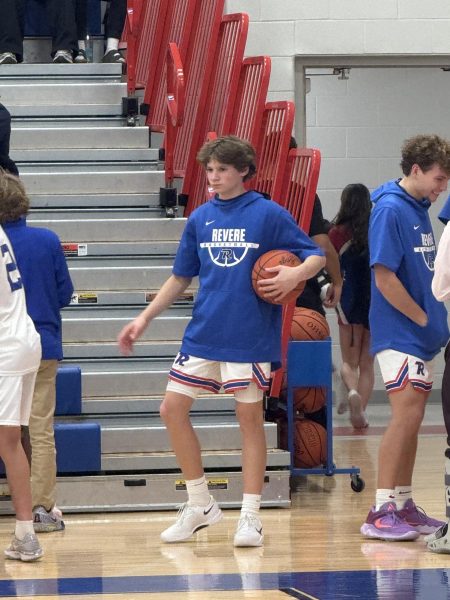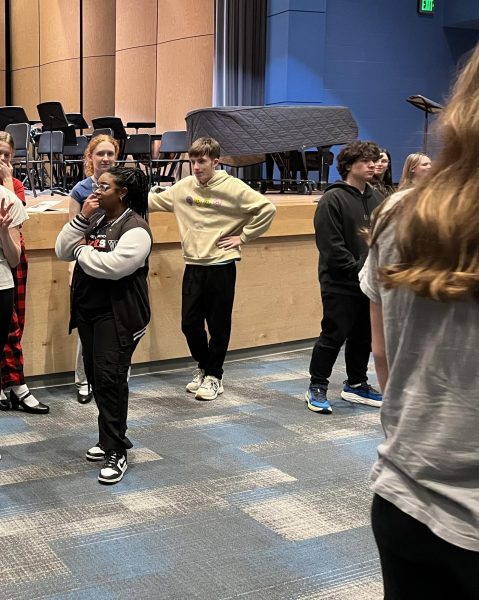Spanish students use virtual reality
Your head turned to the left and watched the streets of Mexico City buzz with life. Notice the vivid, colorful murals painted tastefully on the brick and cinder walls. Another student beside you expands their search through human cells. The small device called virtual technology can literally take someone anywhere, from the tropical life of Costa Rica to a college tour in Ohio.
Virtual reality constructs a computer-generated scenario that simulates experience. The immersive environment can relate to the real world or create an experience not possible in our physical reality. Also commonly referred to as VR, virtual reality often comes in the form of headsets or goggles to completely focus your senses towards a screen. As the original concept of VR dates back to the 1930s, today, over 230 companies have developed VR-related products. Revere takes part with Google Expeditions, a VR teaching tool that lets anyone lead or join immersive virtual trips all over the world with over 700 expeditions. Revere’s Spanish III, IV, and AP classes visited Mexico City, Hispanic communities in the United States and the tropics of Costa Rica. Spanish teacher Deborah Varga had the opportunity to learn VR firsthand and then pass down her learnings to her students. Varga explained the learning process of VR.
“I went to a workshop about it here at the high school, and [teachers] were presented with strategies on how to incorporate it into the classroom. . . . [Virtual reality] enhances the curriculum, and it provides [students] with something that is a very unique experience, very 21st century. It substitutes something that they would do even on the internet or a website. This is much more sensory-oriented,” Varga said.
The students used the VR not to just explore and have fun with technology, but for actual class assignments. Varga mentioned her adaptations to the accessibility to VR.
“In Spanish III, [students] went to Costa Rica, and we took part of their Integrated Performance Assessment, which is also called an IPA. The students had to do a little research about Costa Rica and visit some tourist sites. Some of the different types of landmarks, different nature-oriented places [were] basically focused on nature in Costa Rica,” Varga said.
Senior and Spanish IV student Makena Ray used VR firsthand in the classroom while working on studying murals and art in Spanish countries. Ray commented on her experience with the technology.
“We used it to learn vocabulary, working on circumnavigating the language and detailing tourist attractions and descriptions. It was a lot more of a cultural learning experience than anything else. I liked it,” Ray said.
Technology Integration Coach Theresa Whyte organized the school’s acquisition of the VR machines and learned about the functions of Google Expeditions and the VR itself. Whyte commented on the high school’s purchase of VR and its beginning at Revere.
“We were kind of inspired here at the high school by what Hillcrest was doing. It came first through [technology integration teacher and librarian] Mrs. Pushpack and the MakerSpace teacher Ms. Davies. . . . Hillcrest wrote a grant and that’s how they received their set first, and then [at] the middle school, a social studies teacher obtained a set from our curriculum director. . . . We realized this was a worthwhile endeavor, [so] our set at the high school came from Mr. King’s technology budget,” Whyte said.
The programs inside Google Expeditions can also relate to other school subjects besides history or foreign languages. Since there are so many programs, subjects like biology or art history can expand. Whyte explained the possible future for VR at Revere and in other core classes.
“I could see a lot of ties to literature. For some students, they’re very visual, so reading a book might be kind of hard to wrap their mind around places, so they could create a field trip of where the character’s been. . . . My hope with the VR is to help our classroom teachers begin to connect this to their curriculum and have experiences for their students,” Whyte said.
Due to the acts of Revere staff, any class can use the virtual reality technology in a variety of possibilities and curriculums besides foreign languages and for students to view parts of the world they may never get to see in person.





